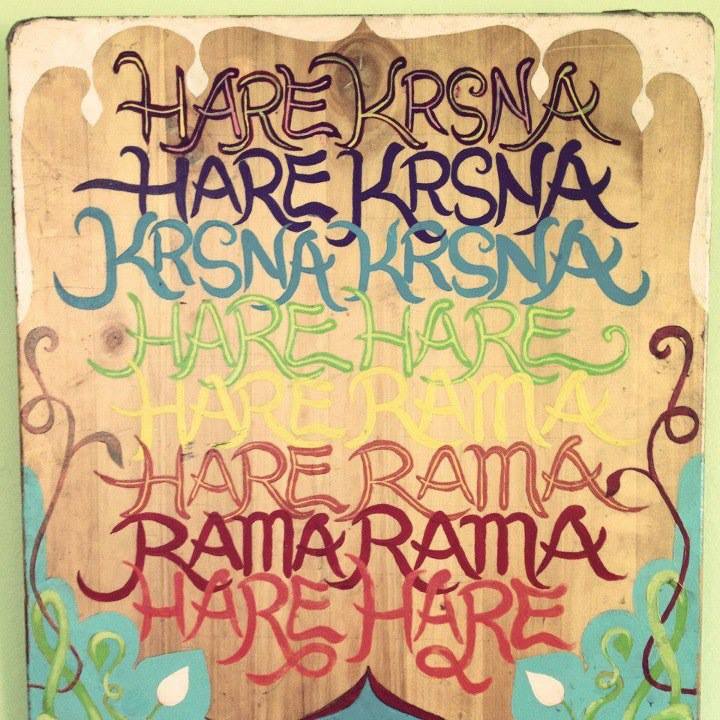There are numerous meditation techniques. Amongst these, mantra meditation is particularly prominent amongst practitioners of devotional yoga or bhakti-yoga. The Sanskrit wordman means mind, while tra means to free. Mantra meditation frees your mind of fear and anxiety. But, it does even more than this, it opens your heart to reveal your spiritual nature of eternity and bliss.
Increased complexity in today’s fast paced world makes learning to free your mind particularly important. In previous generations life was simpler and possibly less convenient, but it was also less stressful. Threatening situations activate your body’s parasympathetic nervous system, releasing stress hormones to equip your body to address the threat. Your heartbeat quickens, your muscles tighten, you have increased energy, and your immunity and digestion shut down.
The threats your ancestors encountered in prehistoric times were immediate dangers, such as wild animals, that were quickly addressed. Once the danger was over, the parasympathetic nervous system was activated so their muscles could again relax, with their heart rate slowing, and their digestion again activated. This allowed their bodies to quickly return to a resting state for recovery.
Unfortunately, today’s pressures are constant. Workplace demands, tense relationships, deadlines, traffic jams, and fear of terrorism are unceasing threats. All of these stressors cause people to become anxious and lose tempers in anger. As such, many people are always in a fight or flight state and never come to relax and recover. They cannot sleep, digest, they have aches and pains in their bodies, and their immunity is depleted. The body cannot maintain this state of heightened alert for an extended duration of time. Over time, it leads to a crisis involving physical and emotional breakdown along with depression.
The interesting thing about this stress response is that it is activated whether the threat is real or imagined. Whether you feel threatened by a snake, or a rope that you mistake for a snake, your body will respond the same way. The body responds to the mind. Negative thoughts and emotions create a negative a defence response, while positive thoughts and emotions create a relaxation and recovery response.
Modern science has found many practical outcomes of meditation as a way of nurturing a relaxed state for self-rejuvenation and healing. Yes, your body has an amazing ability to heal itself, if only given a chance. Medically meditation has been demonstrated to reduce symptoms of cardio and gastrointestinal disease, as well as reduce mood disorders of stress, depression, anger, irritability, and anger. It has also been found to thicken the parts of the brain’s cerebral cortex responsible for decision-making, attention, and memory. The greater benefit of mantra meditation, however, that was the focus of the ancients is that it awakens your spiritual nature and connects you in yoga with Divine Consciousness.
There are two types of mantra meditation: japa and kirtana. Japa is a form of meditation involving the meditative repetition of a mantra or name of the Divine. This practice of repetitive prayer is present in varied forms within most spiritual traditions in the world, although the yoga tradition of India generally gives more emphasis to it as a specific discipline. Beads called japa-mala are used to count the repetitions of mantra chanting. One mantra is chanted on each bead before moving onto the next. The number of beads in the japa mala is generally 108. The main purpose of the beads is to keep track of the number of mantras chanted. One cycle of the 108 beads is called “one round”. Bhakti yoga practitioners decide on a minimum number of rounds they want to chant each day. Fingering the beads also help one focus on the sound of the mantra. Of all mantras the most powerful and highly recommended by Chaitanya and other greater teachers is the Hare Krishna maha-mantra or great chant to free the mind.
Kirtan is another type of mantra meditation. The process of kirtan involves singing sacred mantras to the accompaniment of musical instruments. Generally, it involves a call-and-response style of singing where the leader sings a mantra and the audience chants in response. Thus, kirtan includes the audience in the performance. Kirtan is a culture where people can share spiritual meditation in a joint spiritual experience. Often it begins with all the participants sitting meditatively, but ends with joyous dancing as kirtan awakens the natural joy of the soul. Kirtan is increasingly gaining popularity in yoga schools all over the world that organise regular kirtan events with invited kirtan musicians. But you don’t have to attend an outside event, or even be a musician to sing kirtan, you can also do kirtan at home with friends and family. And if you don’t have friends with whom to share kirtan, you might engage in kirtan by responding to a singer’s chanting on a recording or right here on www.iskcongauteng.com our media section.
For more kirtan articles, music samples & downloads, event news, and short films and other kirtan resources visit http://www.sriprahlada.com and become a member of Sri Prahlada’s Kirtan Community for FREE. Aside from instant access to a lot of fantastic kirtan resources, you will also receive Sri Prahlada’s e-newsletter with news, realizations, and experiences with kirtan.
